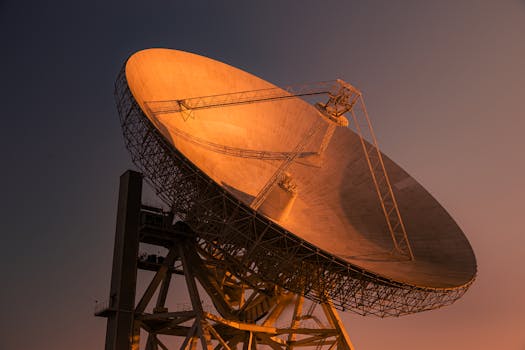GEO satellites, or Geostationary Earth Orbit satellites, are a type of satellite that orbits the Earth at an altitude of approximately 36,000 kilometers above the equator. GEO satellites are designed to remain stationary relative to a fixed point on the Earth’s surface, allowing them to provide continuous coverage of a specific region. This unique characteristic makes GEO satellites an essential component of modern communication, navigation, and remote sensing systems.
The history of GEO satellites dates back to the 1960s, when the first geostationary satellite, Syncom 2, was launched by NASA. Since then, the technology has evolved significantly, with advancements in satellite design, launch vehicles, and ground control systems. Today, there are hundreds of GEO satellites in orbit, operated by various governments, organizations, and private companies.
GEO satellites play a vital role in facilitating global communication, enabling the transmission of data, voice, and video signals across the globe. They are used for a wide range of applications, including television broadcasting, telecommunications, internet connectivity, and weather forecasting. The use of GEO satellites has revolutionized the way we communicate, making it possible to connect with people and access information from anywhere in the world.
In addition to communication, GEO satellites are also used for navigation and remote sensing. The Global Positioning System (GPS), for example, relies on a network of GEO satellites to provide location information and timing signals to GPS receivers on the ground. Remote sensing applications, such as Earth observation and meteorology, also rely on GEO satellites to collect data on the environment, climate, and weather patterns.
The benefits of GEO satellites are numerous, and their impact on modern society is undeniable. They have enabled global communication, facilitated international trade and commerce, and improved our understanding of the Earth and its environment. However, the use of GEO satellites also raises concerns about space debris, radio frequency interference, and the potential for satellite collisions.
In recent years, there has been a growing trend towards the development of new satellite technologies, such as high-throughput satellites (HTS) and small satellites. These new technologies offer improved performance, increased capacity, and reduced costs, making them an attractive option for a wide range of applications. The use of GEO satellites is expected to continue to grow, with new launches and missions planned for the coming years.
In conclusion, GEO satellites have revolutionized global communication, navigation, and remote sensing, and their impact on modern society is undeniable. As technology continues to evolve, we can expect to see new and innovative applications of GEO satellites, further expanding their role in our daily lives.
The future of GEO satellites is exciting, with new developments and advancements on the horizon. As we continue to rely on these satellites for communication, navigation, and remote sensing, it is essential to address the challenges and concerns associated with their use. By doing so, we can ensure that the benefits of GEO satellites are realized for generations to come.
One of the key challenges facing the GEO satellite industry is the increasing amount of space debris in Earth’s orbit. As the number of satellites in orbit grows, so does the risk of collisions and the accumulation of debris. This is a major concern, as it can pose a significant threat to the operation of satellites and the safety of space missions.
Another challenge facing the GEO satellite industry is the need for sustainable and responsible practices. As the demand for satellite services continues to grow, it is essential to ensure that the environmental impact of satellite operations is minimized. This includes reducing waste, conserving energy, and promoting the use of environmentally friendly technologies.
Despite these challenges, the future of GEO satellites looks bright. With advancements in technology and the development of new applications, the use of GEO satellites is expected to continue to grow. As we look to the future, it is essential to address the challenges and concerns associated with the use of GEO satellites, ensuring that their benefits are realized for generations to come.
